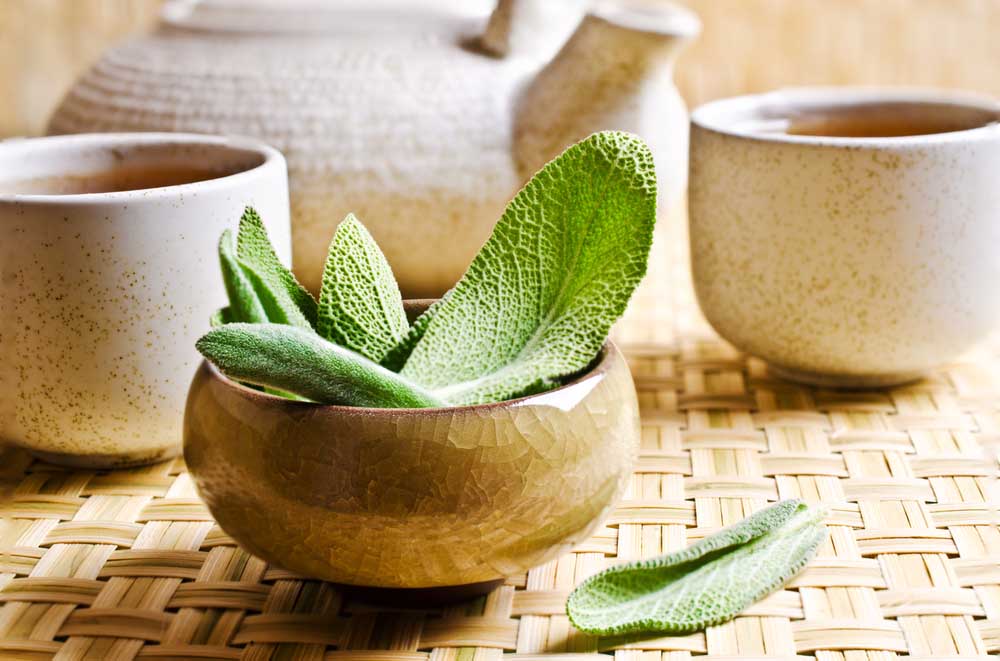
There is a laundry list of traditional foods and tasty recipes associated with the holiday season.
Yet it’s the seasonings—the herbs and spices—that make them pop. Sweet potatoes and
cinnamon, for example, are a match made in heaven. And while poultry and butternut squash
come alive when paired with any number of seasonings, Salvia officinalis—better known as
sage herb—is the herb whose aroma and flavor often fill the air.
Like many other herbs, such as rosemary and basil, sage is a nutritional powerhouse. Of course,
it takes a relatively large quantity of sage to rack up a significant amount of micronutrients, but
that’s easy to do when preparing a large holiday meal, or simply incorporating sage into recipes
more often. An ounce of dried sage (granted, several tablespoons) comes with a whopping
600% of the daily value (DV) for vitamin K1, 38% for B6, 46% for calcium, 44% for both iron and
manganese, 30% for magnesium, and 19% for folate. Not bad for some green leaves whose
claim to fame is being one of the star ingredients in poultry seasoning blends.
But sage is good for more than just a tasty roasted chicken. Sage essential oil exhibits
antimicrobial effects against E. coli and various strains of Salmonella and Shigella. It also has
antioxidant properties that protect against lipid peroxidation. The primary compound
responsible for these beneficial effects of sage is carnosic acid, also called Salvin, reflecting its
discovery in the Salvia plant genus. Carnosic acid is also a large constituent of rosemary, thus
accounting for the similar antimicrobial and antioxidant activities of rosemary extracts, not to
mention the somewhat similar aromas and flavors of the two herbs.
Other chemical constituents of sage, namely, ursolic acid and policy acid, have shown
cytotoxic capability in drug-resistant tumor cells. These compounds bind to key molecular
intermediaries of the NF-κB pathway, potentially inhibiting carcinogenic cascades mediated by
NF-κB. Extracts of sage also exhibit fungicidal effects, dependent on concentration.
For hyperlipidemic patients, if diet, exercise, and lifestyle modifications fail to improve
cholesterol levels and triglycerides, a sage herb extract may have some efficacy. A randomized,
double-blind, placebo-controlled trial (RCT) showed that, among hyperlipidemic subjects with a
mean age of 56 years, two months of supplementation with sage extract (500mg every 8 hours)
resulted in reduced total cholesterol, increased HDL, and reduced LDL, VLDL, and triglycerides
compared to placebo. No adverse effects were reported, unlike the many unpleasant and
potentially harmful side effects of traditional cholesterol-lowering medication.
The sage extract may also have beneficial effects on other parameters of cardiometabolic health,
such as fasting blood glucose and hemoglobin A1c (HbA1c). In a randomized placebo-controlled
study involving hyperlipidemic type-2 diabetics, the sage extract is taken at 500mg t.i.d. for three
months resulting in significant reductions in fasting glucose, HbA1c, total cholesterol,
triglycerides, and LDL-C, with an increase in HDL-C, compared to placebo. Again, no adverse
effects were noted, in contrast to aggressive pharmaceutical methods to lower blood glucose.
Another interesting potential use for sage extract is in Alzheimer’s disease. Sage belongs to the
Lamiaceae taxonomic family, a category that includes mint, rosemary, basil, thyme, and
oregano. Many species from the Lamiaceae family are potent acetylcholinesterase inhibitors.
With the crucial role, acetylcholine plays in-memory processing, botanical substances that can
preserve the presence of this neurotransmitter might be beneficial for conditions involving
cognitive impairment and decline.
A double-blind RCT employing sage extract supplementation
for four months in patients with mild to moderate Alzheimer’s disease showed that, compared
to placebo, sage is effective in improving patients’ scores on Alzheimer’s Disease
Assessment Scale (ADAS), and may also help reduce agitation in Alzheimer’s patients. A
a systematic review of clinical trials that assessed the efficacy of sage extracts for improving
memory, cognitive impairment, and Alzheimer’s disease concluded that it is significant
benefit, but clarification is needed regarding the most effective dosing as well as extraction and
delivery methods.
Sage need not be banished to the back of the spice rack after the holidays are over. Sage herb is
dynamite with roasted butternut squash, pork chops, and Brussels sprouts, and it gives great flavor
to a brown butter sauce that you can use over vegetables or pasta.


